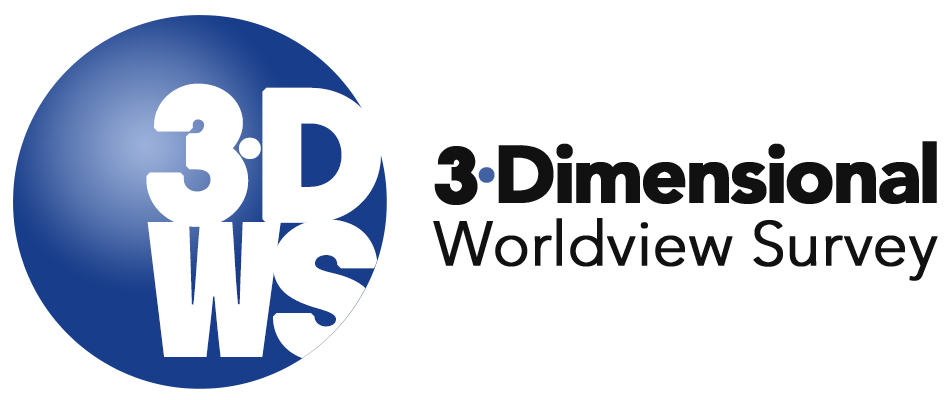How Can We Know Which Worldview Is True? A Guide for Christian Educators
February 14, 2023 (Last updated September 16, 2025)
Katherine Schultz
Every day, Christian educators hear the challenging assertion: “You believe your truth, I’ll believe mine.” This phrase often circulates in classrooms, dorm lounges, and informal conversations. It reflects a cultural mindset of relativism that can quietly seep into students’ and even some faculty’s thinking—not out of rebellion, but confusion. As leaders forming the next generation’s faith and worldview, clarity on why the biblical worldview is uniquely true is vital.
This post explores how Christian educators can confidently and humbly guide students in evaluating worldviews, rooted firmly in Scripture and practical assessment tools like the 3-Dimensional Worldview Survey (3DWS). It unfolds deeply with biblical insight, student application, and teaching guidance.
Why Students Feel Confused by Competing Worldviews
In conversations with senior high and university students, one hears a common refrain: “How can anyone claim their worldview is the truth when there are so many different perspectives?” This confusion arises because students often see worldviews fragmented into ideas about spirituality, morality, and reality that feel more like preferences than truths. The relativistic humidity of culture whispers, “Who’s to say what’s true for everyone?” leading to uncertainty.
The issue isn’t just cultural noise; it’s a lack of training. Students frequently receive vocabulary about worldviews but rarely see a structured framework to compare them effectively. Without this foundation, fragmented ideas seem equally plausible, and biblical truth appears just one option among many. As Proverbs notes, “The fear of man will prove to be a snare, but whoever trusts in the Lord is kept safe” (Proverbs 29:25). Effective worldview formation requires students to recognize that all worldviews answer a set of core questions—providing clarity, not just competing opinions.
- Related resource: Your Worldview Instruction: Is It Even Making A Difference? explores how to measure instructional impact amid worldview confusion.
The Core Questions Every Worldview Answers
Worldviews, whether biblical Christianity, secular humanism, Eastern mysticism, or others, attempt to answer fundamental questions about reality, humanity, knowledge, and redemption. The 3D Worldview Survey identifies 15 “parameters” that capture this breadth. You can explore the full 15 parameters series as a practical worldview toolkit. Among key parameters for introductory reflection:
- Ultimate Reality: What is truly real? Is God transcendent, or is the material universe all that exists? (Ultimate Reality)
- Nature of Human Beings: Are humans created good, fallen, divine, or something else? (True Nature of Humanity)
- Means of Knowing Truth: Can truth be known through reason, experience, or divine revelation? (Means of Knowing Truth)
- Human Predicament: What is wrong with the world that needs fixing or salvation? (Human Predicament)
- Solution to the Predicament: What brings true healing, redemption, or enlightenment? ( Solution to Human Predicament)
Jesus proclaimed, “I am the way and the truth and the life. No one comes to the Father except through me” (John 14:6). This is not a cultural opinion but a historical and divine claim grounded on resurrection power. Understanding why this claim stands alone is key to discipleship.
“For Christian educators ready to equip their students with practical tools, the Download 10 Questions PDF offers ten strategic worldview questions drawn from the 3DWS—perfect for initiating insightful classroom conversations.”
Resources for TeachingIs It Arrogant to Say a Worldview Is True?
One reason students hesitate to affirm biblical truth is a misconception about humility. Modern culture often equates humility with saying, “I could be wrong.” However, biblical humility is submission to God’s revelation. As Psalm 119:160 reminds us, “All your words are true; all your righteous laws are eternal” (Psalm 119:160).
Affirming truth is not prideful any more than affirming gravity or arithmetic is arrogant. Saying “2 + 2 = 4” isn’t about elevating the speaker but recognizing reality. Similarly, believers can confidently share the biblical worldview without fear of offense or misunderstanding.
“Always be prepared to give an answer to everyone who asks you to give the reason for the hope that you have” (1 Peter 3:15).
This preparation is a gift to students who often lack clear, reasoned explanations. Humility doesn’t mean downplaying the truth; it means speaking it lovingly and wisely.
The Value of Holistic Worldview Assessment
Worldview formation is not merely about beliefs; it includes actions and heart orientation. What people do and love matters as much as what they think. The apostle Paul exhorted believers: “Whatever you do, work at it with all your heart, as working for the Lord” (Colossians 3:23).
The 3DWS captures these three dimensions: belief (mind), behavior (actions), and heart (affections), offering leaders insights beyond surface-level opinions. This comprehensive view aids discipleship by revealing where beliefs and behaviors diverge, a crucial step in guiding students toward authentic gospel transformation.
- Related resource: Forming Hearts, Not Just Minds.
- Also see: Beyond Beliefs: 3 Essential Markers to Assess Student Biblical Worldview Formation.
When Other Worldviews Get Some Things Right
False systems often borrow truths because all truth ultimately comes from God—like counterfeit money copies real currency but lacks value. Romans 1:25 states, “They exchanged the truth about God for a lie, and worshiped and served created things rather than the Creator.”
This helps students differentiate between partial truths and ultimate truth. Seeing beauty, justice, or wisdom in another worldview doesn’t mean that worldview is true in its entirety.
- Related resource: When a Biblical Worldview Is Out of Balance…
Addressing Students’ Honest Questions
One poignant student asked, “If other religions seem to work for people, how can we say they’re wrong?” These challenges deserve measured, respectful responses grounded in biblical truth and worldview analysis.
Christianity’s claims are about history, revelation, and the nature of God. For example, “In the beginning, God created the heavens and the earth” (Genesis 1:1) and “For all have sinned and fall short of the glory of God” (Romans 3:23).
Leaders can help students see that any system contradicting these facts cannot also be true. This approach invites dialogue rather than defensiveness.
- Related resource: Why Teach a Biblical Worldview?.
Practical Teaching Tips for Christian Leaders
- Begin with foundational worldview questions to surface students’ thinking. (See 3 Questions to Discover Students’ Biblical Worldview)
- Use the 3DWS or your own 10-question PDF to spark guided discussions. (Download 10 Questions PDF)
- Model confident humility: affirm biblical truth without alienating.
- Create safe spaces to explore doubts and differences.
- Encourage integration of faith and academics across curriculum subjects. (26 Tools for Transformation)
Student Reflections on Worldview Formation
Students who engage with worldview assessments report surprising revelations. Amber shared, “My 3DWS results revealed remnants of individualism and moral relativism I wasn’t aware of.” Joelle said, “It showed me how minimizing Scripture’s authority reduces truth to feelings.” These reflections encourage leaders that worldview work yields deep discipleship fruit.
Equip and Empower: A Proven Tool to Strengthen Student Worldviews
Developing a rich, 3D biblical worldview shapes not only student beliefs but also their actions and heart orientation. Christian leaders and educators often need practical, effective tools and frameworks to assess student worldview maturity and disciple them well.
For those looking for a strategic starting point, the Download 10 Questions PDF now offers ten carefully selected worldview questions, mapped directly to the 3DWS survey items. These questions help leaders identify both strengths and gaps in student worldview formation quickly and thoughtfully, making it easier to tailor discipleship conversations and teaching plans.
As you grow in understanding and commitment to this work, your students will gain a clearer grasp of why the biblical worldview uniquely stands as true, coherent, and transformative.
Download the 10 Questions PDF today and begin equipping your students to think deeply and live out their faith with confidence.
Key Takeaways
- Every worldview answers core questions. Effective assessment uncovers which align with biblical truth.
- Biblical truth is knowable and certain. Confident humility flows from submission to God’s revealed word.
- Discipleship requires heart and behavior focus. Beyond belief, worldview formation shapes actions and love.
- Assessment tools unlock insight. The 3DWS and 10 Questions PDF empower leaders to disciple wisely.
Resources for Teaching Worldview
- If you are looking for resources for teaching comparative worldview, I suggest starting with Sire’s book, The Universe Next Door. Be sure to get the 4th edition or later so that you have the information Sire added about heart-orientation in the definition above.
I realize additional visual and explanatory resources for teaching comparative worldviews may also be helpful, so here is a list with brief commentary.
Summit Ministries Worldview Chart
- Description: Chart comparing 6 worldviews (Biblical Christianity, Islam, Secularism, Marxism, New Spirituality, Postmodernism) in 10 areas (thology, philosophy, ethics, biology, psychology, sociology, law, politics, economics, history), with additional link to descriptions that further help understanding.
- Audience: high school/college students
- Link: https://www.summit.org/resources/worldview-chart/
Rasi, Umberto. “Worldviews, Contemporary Culture, and Adventist Thought”
- Description: Provides a summary chart similar to Sire’s for three worldviews: theism, naturalism, pantheism in 10 parameters (prime reality, nature of God, origin of universe and life, means of knowing truth, nature of human beings, purpose of human life, basis of morality, human predicament, solution to human predicament, death, human history, ultimate human destiny). Support for classroom teachers seeking to develop a worldview in their students. Though it’s written for an Adventist audience, it has broad application.
- Audience: academic/scholarly
- Link: https://christintheclassroom.org/vol_26B/26b-cc_001-016.pdf
Fisher, Barbara. “Exploring Worldviews: A Framework”
- Description: Updates Rasi’s table slightly; the article a general framework for exploring a worldview—in terms of defining, analyzing, developing, testing and refining it.
- Audience: academic/scholarly
- Link: https://research.avondale.edu.au/teach/vol6/iss1/11/
Generation Word Worldview Chart
- Description: Very similar to Summit Ministries (as noted on the link), with the same 6 worldviews and 10 topics.
- Audience: general
- Link: https://www.generationword.com/photos/worldview_chart_gw3.gif
Worldview Chart
- Description: Chart comparing 6 worldviews (theism, deism, polytheism, panentheism, pluralism, naturalism) in 5 areas (metaphysics, theology, epistemology, ethical, anthropological).
- Audience: general
- Link: https://i1064.photobucket.com/albums/u376/mrwormburn/TRIN2005.jpg
What’s Your Worldview — article
- Description: Article with several links, particularly aimed at how the items linked can be used in evangelistic and apologetics conversations.
- Audience: general
- Link: https://davemiers.com/whats-your-worldview/ (includes links to the What’s Your Worldview adventure and Worldview Summary links below)
What’s Your Worldview — adventure
- Description: Sort of a “create your own adventure” path with a series of statements for various levels of agreement beginning with “God exists,” taking the next step of question based on the previous answer. Fourteen possible results: polytheist, pantheist, atheist, apatheist, agnostic, nihilist, deist, theist, existentialist, panentheist, humanist, naturalist, relativist, Christian theist.
- Audience: general
- Link: https://davemiers.com/wp-content/uploads/2014/07/worldview_survey2.jpg
Worldview Summary graphic organizer
- Description: A graphic organizer of brief descriptions of each of 14 worldviews (agnosticism, apatheism, atheism, Christian theism, deism, existentialism, humanism, naturalism, nihilism, panentheism, pantheism, polytheism, relativism, theism. A good partner source to go with the What’s Your Worldview adventure graphic.
- Audience: general
- Link: https://visualunit.me/2011/12/19/worldview-summary/
Worldview Chart layers of the onion graphic
- Description: A visual with 4 layers of how to understand someone’s worldview: observable behavior, socio-cultural, values, worldview. Shows the relationship between these, and has notes on the insider vs outsider perspective on someone’s worldview.
- Audience: general
- Link: https://www.garydavidstratton.com/wp-content/uploads/2010/12/worldview-chart.png
Islamic Worldview Prezi
- Description: Prezi collection (about 25 “slides”) giving an introduction to the Islamic worldview. Includes a brief comparison between the Islamic and western worldviews.
- Audience: college students or adults
- Link: https://prezi.com/l5ixjf53sh-j/islamic-worldview/
Worldview and Apologetics Prezi
- Description: Prezi collection (about 70 “slides”) giving an overview of worldview as a “solar system” of center, self, other people, nature, and God as the “planets.” Gives historical development of worldviews and apologetics with a timeline from about 6000 BC to the 21st century.
- Audience: college students or adults
- Link: https://prezi.com/ilmaz0wmoc6w/worldview-and-apologetics/
Failure of Christian Leadership Side-by-Side Mature vs Immature Biblical Worldview
- Description: Chart showing how a mature biblical worldview should influence every area of life and policy versus an immature view that limits the impact of a biblical worldview to the religious realm. Particularly from an American historical perspective.
- Audience: general
- Link: http://www.godgov.org/sitebuildercontent/sitebuilderpictures/NewsestWVChart.jpg
Where to begin in teaching worldview?
It can be overwhelming to teach comparative worldview, particularly if you don’t know where your students are in their own worldview development. If you’d like help with questions that you can ask to understand someone’s worldview, check out this free resource.
#biblicalworldview #ChristianEducators #3dworldview





